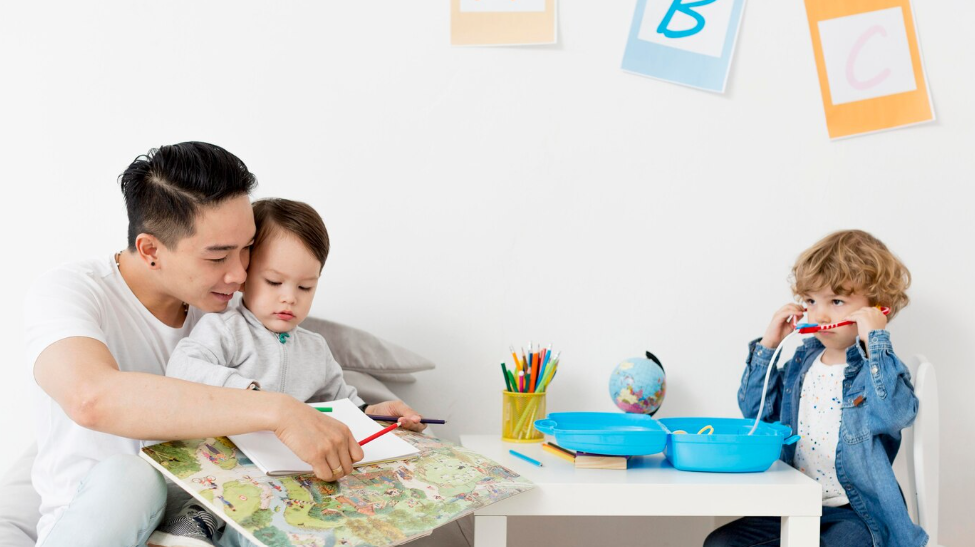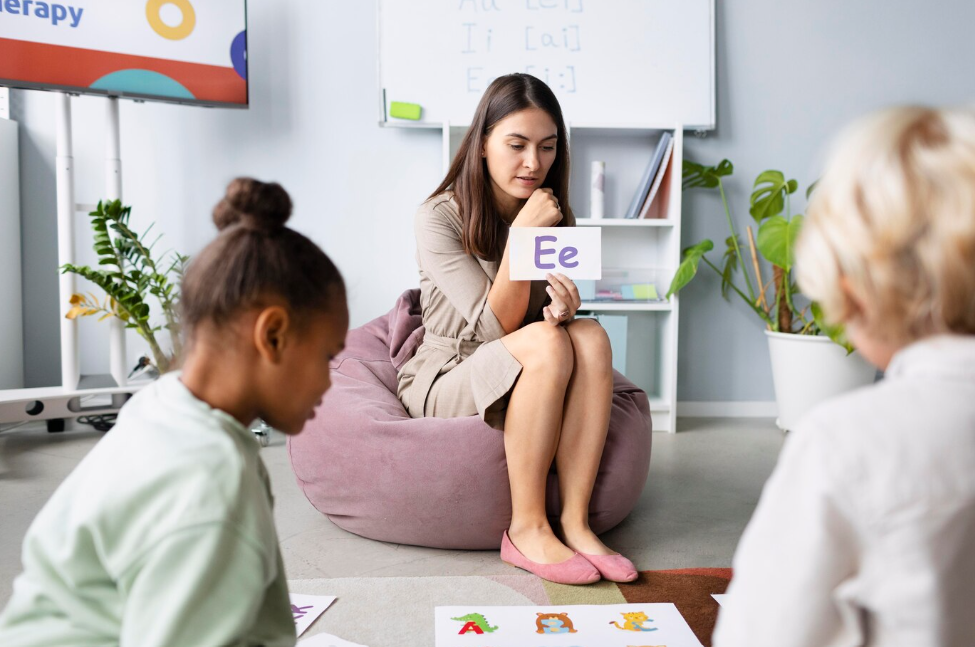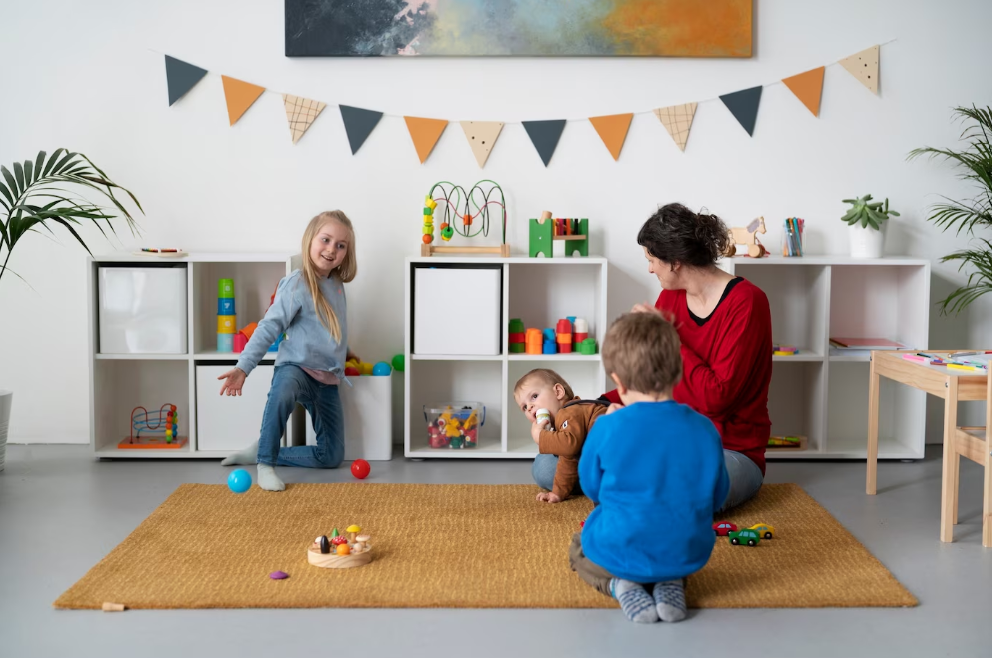For years, kindergartens in Singapore were only run by the private sector. However, in 2014, the first five kindergarten’s under the Ministry of Education opened its doors to kindergarteners.
An initiative by the Ministry of Education (MOE), the first five MOE Kindergartens in Singapore (MK) started operations in January 2014. There are currently 18 MOE Kindergarten branches islandwide and this number is expected to increase to 50 by 2023. MOE Kindergartens have garnered attention as it is an initiative launched by MOE, and the priority that its students receive during the primary school registration scheme.
If you are considering between enrolling your child to an MOE Kindergarten and a private kindergarten or preschool, here are some factors that outline how the two options differ.
Affiliation to Primary Schools
One advantage of enrolling your child in an MOE Kindergarten is that they receive priority under Phase 2A2 in the Primary School registration exercise for the school that the kindergarten shares its premises with.
This means that MOE Kindergarten students will be registering in the same category as children whose parents or siblings have studied in the same school. Children whose parents are staff members – instead of joining the later phases where registration is based on distance of their home to the school.
Preschoolers in private preschools and kindergartens do not currently enjoy such privileges for admission to primary schools.
Location
Currently, you can find majority of MOE Kindergartens within the area of selected primary schools. Those that are not will progressively be shifted to nearby primary schools. This is to facilitate a smoother transition to primary school for preschoolers. However, some travelling may be needed as most primary schools are nestled deep within residential estates.
You can often find private preschools like MindChamps PreSchool in prime locations around Singapore. These locations may include shopping malls, business parks or within walking distance of MRT stations. Enrolling your child in a centre near your home or workplace makes drop-offs and pick-ups more convenient.
Academic Calendar for kindergartens in Singapore
MOE Kindergarten in Singapore offers a four-hour programme in two sessions: morning (8am to 12pm) and afternoon (1pm to 5pm). You may choose to enrol your child in either session.
The kindergartens follow MOE’s calendar for school terms. This means that there will be four major vacation periods that add up to about three months. This is not in addition to other scheduled school holidays and rest days on Mondays when a Public Holiday falls on a Sunday.
Private preschools operate year-long and offer full-day (7am to 7pm) as well as half-day (7am to 1pm) programmes. On average, there are seven centre closure days which include three half-days on the eve of major festivals.
Fees and Subsidies
MOE Kindergarten charges $160 for Singapore Citizen children and $320 for Permanent Resident children. Families with a gross household income of less than $6,000 can apply for the Kindergarten Fee Assistance Scheme (KiFAS). For MOE Kindergarten fees are payable during school holidays.
According to the Early Childhood Development Agency (ECDA), the average fee for full-day childcare programmes in private preschools starts from $1,087 and can be as affordable as $720 before subsidies (Anchor Operators) to as high as more than $2,500 per month.
As a reference, MindChamps PreSchool charges $1,885 for a full-day programme that includes meals, naps and showers. There are no additional fees for enrichment programmes as it is already included in the monthly fee.
The fees are before the Basic Subsidy of $300 and Additional Subsidy in which families with gross household incomes less than $7,500 are eligible to apply.
Teacher-Child Ratio
MOE Kindergarten adheres to the stipulated Teacher-Child ratio set by ECDA, which is 1:20 for Kindergarten 1 and 1:25 for Kindergarten 2.
In comparison, MindChamps PreSchool has a small ratio of 1:11 for Kindergarten 1 and 1:12 for Kindergarten 2. Kindergartens in Singapore with a smaller ratio can provide more individualised attention and care.
Quality of Kindergarten Teachers in Singapore
Before teaching at MOE Kindergartens, potential teachers undergo an eight-month-long MOE Kindergarten Teacher Training Programme that includes practicum and on-the-job training.
Teachers in private preschools are required to possess diplomas or degrees in Early Childhood Education. All teachers in private preschools have Child First Aid certifications. Certain private preschools have specially designed in-house teacher training programmes. For example, MindChamps PreSchool teachers undergo up to 200 hours of proprietary training and education, regardless of previous experience or qualification.
Curriculum
MOE Kindergarten incorporates two core programmes in its curriculum. The HI-Light Programme supports the holistic development of children in six learning areas – Aesthetics and Creative Expression, Discovery of the World, Language and Literacy, Motor Skills Development, Numeracy and Social and Emotional Development.
The Starlight Literacy Programme aims to nurture early childhood bilingualism and offers English along with three Mother Tongue Languages, Chinese, Malay and Tamil. Preschoolers build their language and literacy skills through games, activities and reading out loud in front of peers.
Good private kindergarten for children to devise their own curriculum. MindChamps PreSchool bases its research-backed curriculum on the S.M.I.L.E.S.™ environment. The unique curriculum is the result of over a decade of research and development in psychology, neuroscience, education and theatre. Inspired by the bamboo plant and its strong foundation of roots and tendrils, there are 10 key roots which are learning and developmental strategies aimed at nurturing intellectual and social growth.
MindChamps PreSchool prepares children for the future and equips them with the skills, flexibility and mindset to thrive in a rapidly changing environment fraught with uncertainties.
Enrichment Programmes
MOE Kindergarten does not provide additional enrichment programmes during its four-hour programme.
Private preschools in Singapore offer enrichment programmes in its curriculum for children in the playgroup, nursery and kindergarten levels. At MindChamps PreSchool, the enrichment programmes available include Creativity & Theatrical Strategies™, Gourmet Moments™, NeuroMooves™ and Music for the Mind™ – which are offered at no extra cost.
Application
Applications to MOE Kindergarten in Singapore are conducted once a year for children who will be attending Kindergarten 1 the next year. Parents can register online over a specific four-day period, and in person at the schools on a stipulated date.
Only Singapore Citizens (SC) and Singapore Permanent Residents (SPR) may apply for a slot in MOE Kindergartens. Applicants will receive the outcome of their application via post. As MOE Kindergarten follows the MOE school calendar, it begins lessons in January.
Private preschools do not typically have restrictions on nationalities and registration can be done at any time, depending on vacancy. After successful enrolment the child will join the class either at the start or middle of the month.
Open Houses
Open houses are a great way to speak to the educators and view the facilities of the preschool before deciding whether to enrol your child. During open houses, you can clarify your doubts on any aspect of the programme.
MOE Kindergarten conducts Open Houses at the start of the year before accepting registrations.
On the other hand, MindChamps PreSchool holds month-long Welcome Days three times a year. By appointment only, these Welcome Days showcase the preschool’s state of the art facilities and qualified and dedicated educators.











